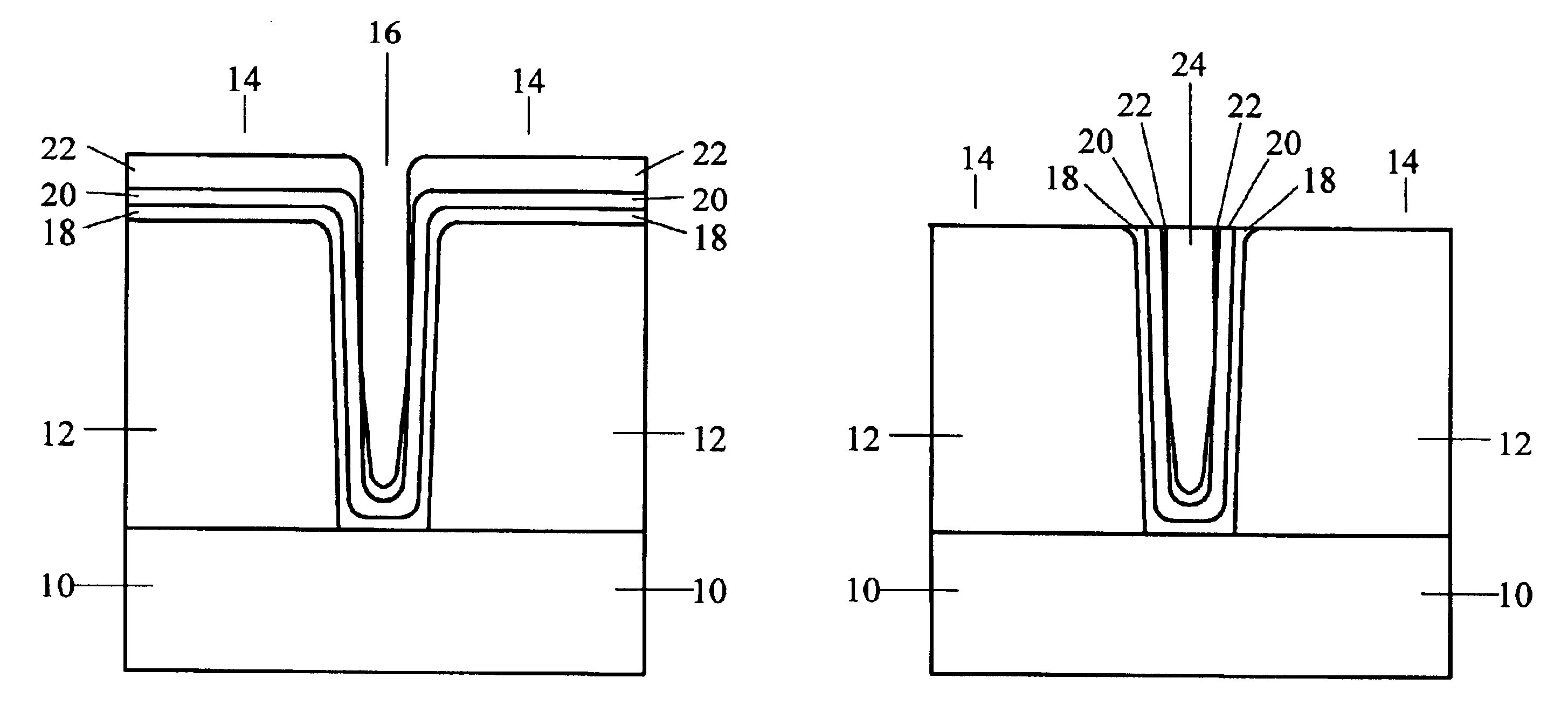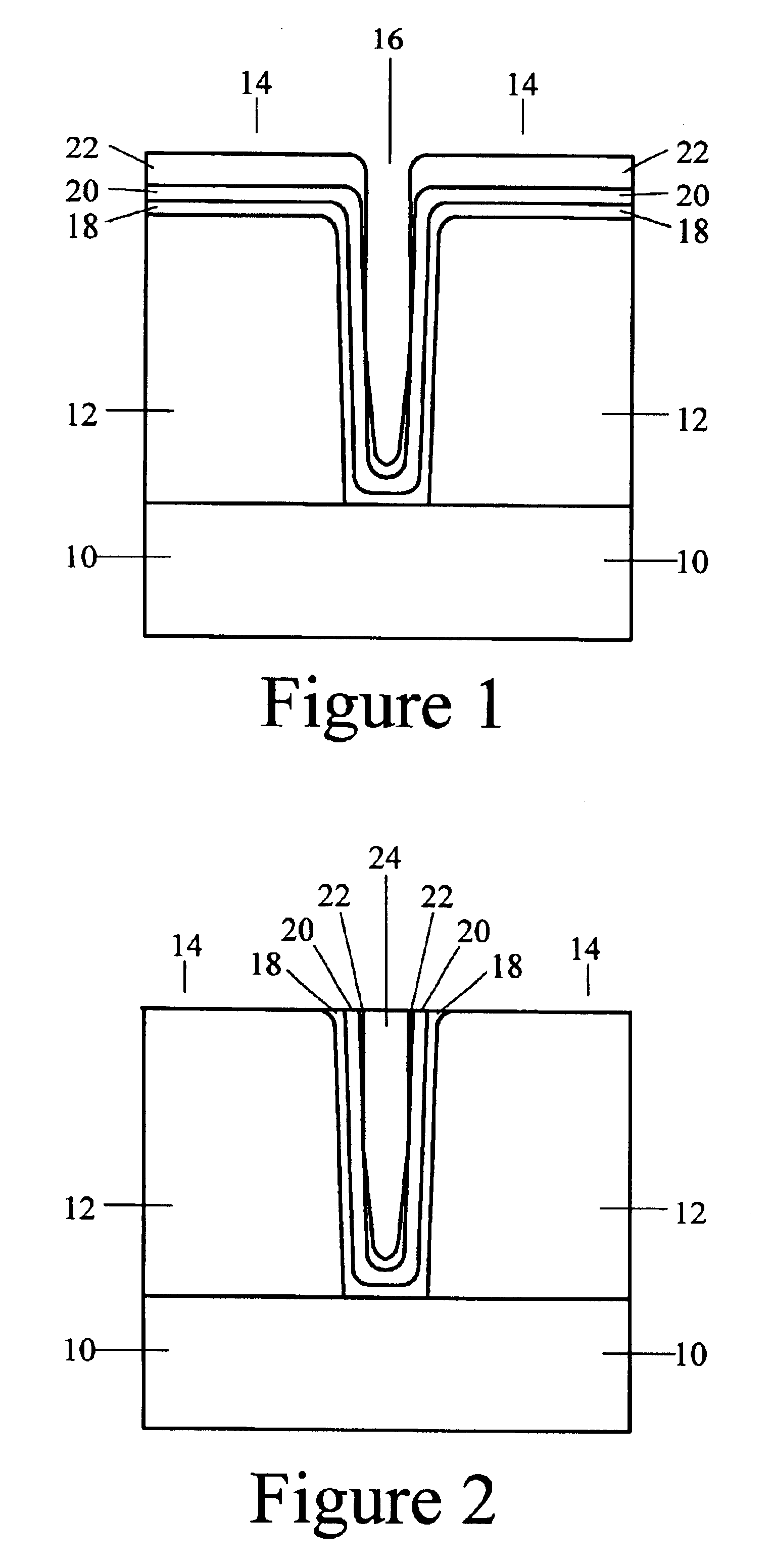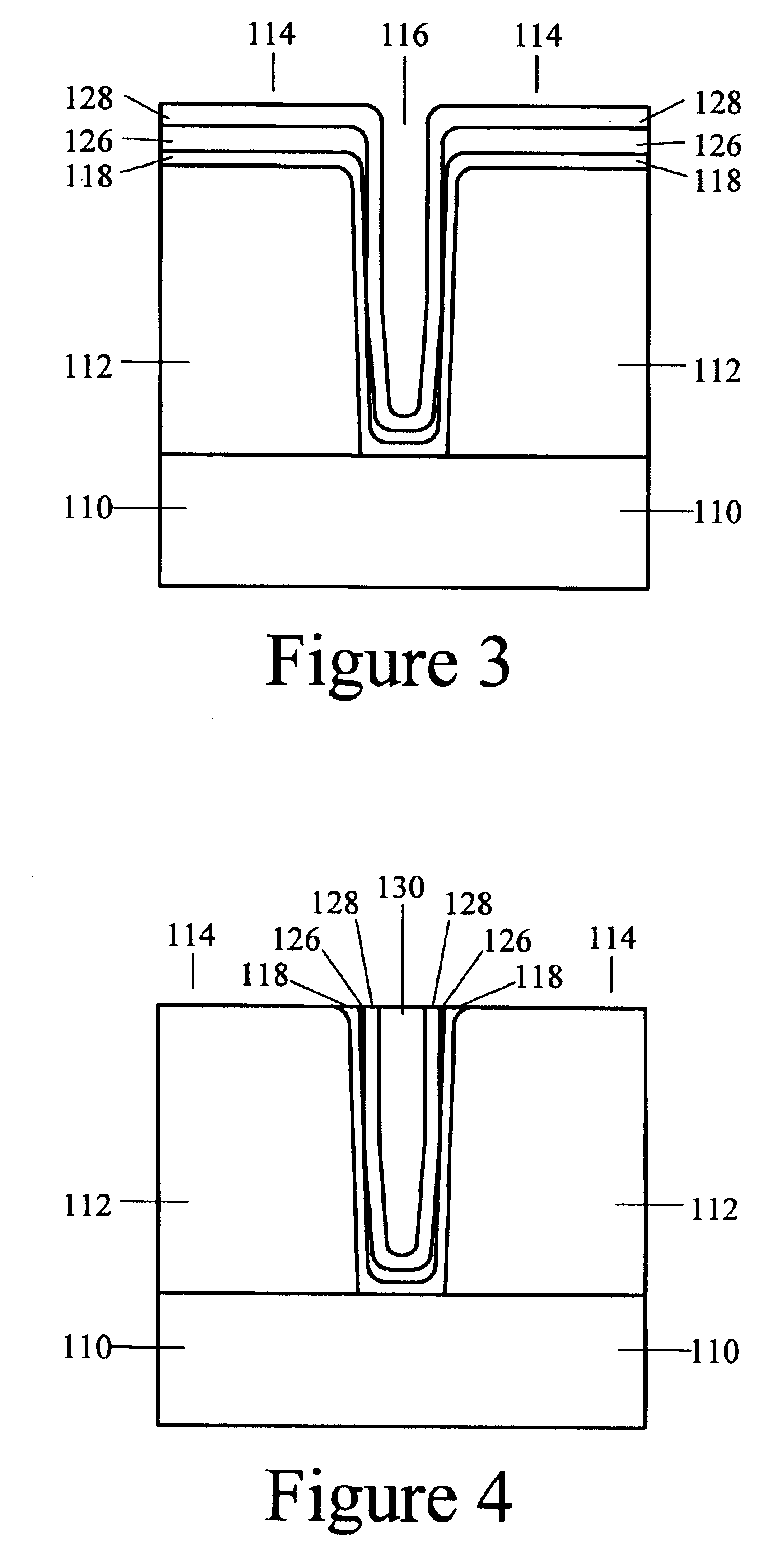Methods for making multiple seed layers for metallic interconnects
a technology of metallic interconnections and seed layers, applied in the direction of selective content distribution, electrical equipment, semiconductor devices, etc., can solve the problems of poor or incomplete filling (voids) of high ar openings, the cvd technique is generally much slower than the other cvd techniques, and the voids are poor or incomplete, so as to achieve high aspect ratios
- Summary
- Abstract
- Description
- Claims
- Application Information
AI Technical Summary
Benefits of technology
Problems solved by technology
Method used
Image
Examples
example 1
[0031]The following presents an example of an embodiment of the inventive method for 0.18 μm wide vias or trenches. In accordance with this embodiment, one deposits, by a CVD technique, a barrier layer comprised of about 200 Å of TaNX or WNX, then one deposits, by a CVD technique, a conformal seed layer comprised of about 300 Å of Cu, finally one deposits, by a PVD technique, a non-conformal seed layer comprised of about 900 Å of Cu (as measured on the field). This will result in a total combined (including the barrier) thickness of about 400 Å inside the openings:[0032]{Cu(PVD˜50 Å) / Cu(CVD˜250 Å) / TaNX(CVD˜111 Å)} and a total combined Cu seed layers and barrier layer thickness of about 1,400 Å on the field:[0033]{Cu(PVD˜900 Å) / Cu(CVD˜300 Å) / TaNX(CVD˜200 Å}. Advantageously, in accordance with the present invention, the inventive “two-step” seed layer deposition ensures a continuous seed layer having excellent step coverage, and a low-resistance electrical path on the field to ensure ...
example 2
[0050]FIGS. 5 and 6 show scanning electron microscope (“SEM”) photographs of a cross-section of a 0.10 μm wide trench having Cu seed layers prepared in accordance with one embodiment of the invention. In accordance with this embodiment, a pattern of trenches was formed in a SiO2 insulating layer. The trenches were about 0.10 μm wide (at their bottom) and about 1.4 μm deep (thereby having an aspect ratio of about 14:1). Next, a barrier layer (WNX) was deposited using a CVD technique. Next, a relatively thin, conformal Cu seed layer was deposited using a CVD technique. The barrier layer and thin, conformal Cu seed layer is seen at 501 in FIG. 6. In accordance with this embodiment, the combined thickness of the barrier and the CVD Cu seed layer was about 500 Å on the field, and about 400-500 Å on the sidewalls and bottom of the trenches. Next, a non-conformal PVD Cu seed layer having a thickness of about 1,400 Å (on the field) was deposited by sputtering. In this embodiment, the non co...
example 3
[0051]Similar to Example 2 above, trenches ˜0.10 μm wide (at their bottom) and ˜1.4 μm deep (thereby having an aspect ratio of ˜14:1) were formed in a SiO2 insulating layer. Next, a barrier layer (WNX) was deposited using a CVD technique. Next, a relatively thin, conformal Cu seed layer was deposited using a CVD technique. The combined thickness of the barrier layer and the CVD Cu layer was 500 Å on the field, and 400-500 Å on the sidewalls and bottom of the trenches. Next, a non-conformal PVD Cu seed layer having a thickness of 500 Å (on the field) was deposited by sputtering. The end result was a combined thickness (including the barrier layer and the Cu seed layers) of only about 400-500 Å on the sidewalls and bottom of the trenches (with excellent continuity and uniformity there), and about 1,000 Å on the field, without pinching-off the trenches.
[0052]It should be understood that the scope of the present invention is not limited to the embodiments described above with respect to...
PUM
| Property | Measurement | Unit |
|---|---|---|
| width | aaaaa | aaaaa |
| width | aaaaa | aaaaa |
| size | aaaaa | aaaaa |
Abstract
Description
Claims
Application Information
 Login to View More
Login to View More - R&D
- Intellectual Property
- Life Sciences
- Materials
- Tech Scout
- Unparalleled Data Quality
- Higher Quality Content
- 60% Fewer Hallucinations
Browse by: Latest US Patents, China's latest patents, Technical Efficacy Thesaurus, Application Domain, Technology Topic, Popular Technical Reports.
© 2025 PatSnap. All rights reserved.Legal|Privacy policy|Modern Slavery Act Transparency Statement|Sitemap|About US| Contact US: help@patsnap.com



